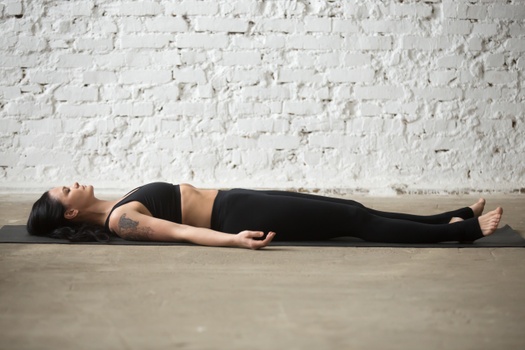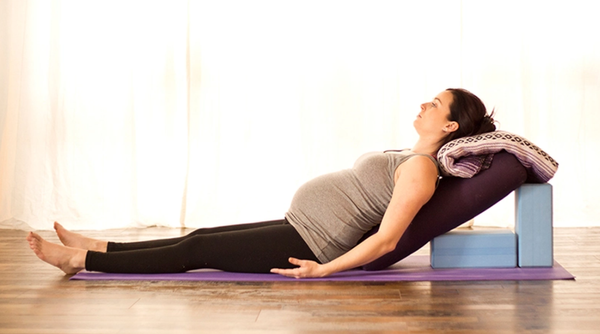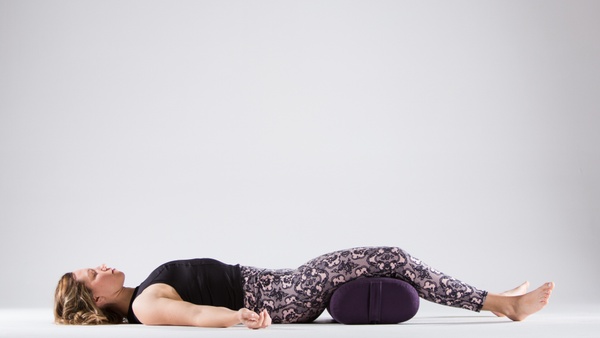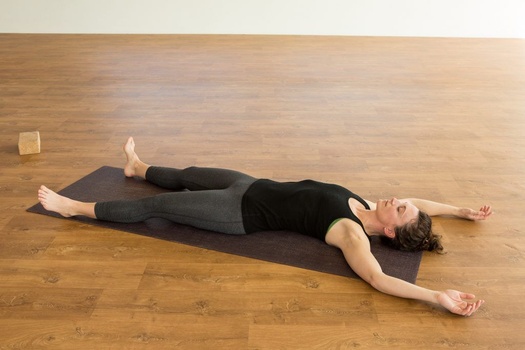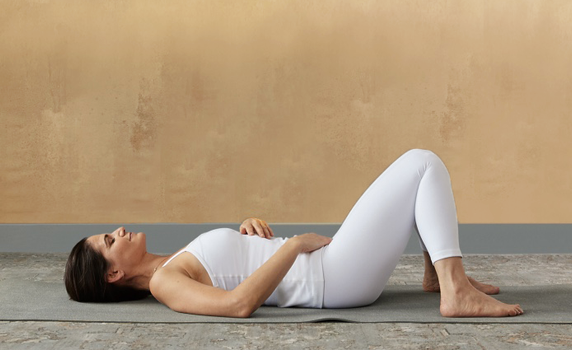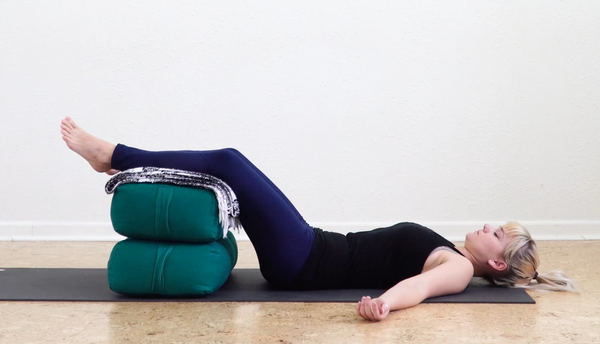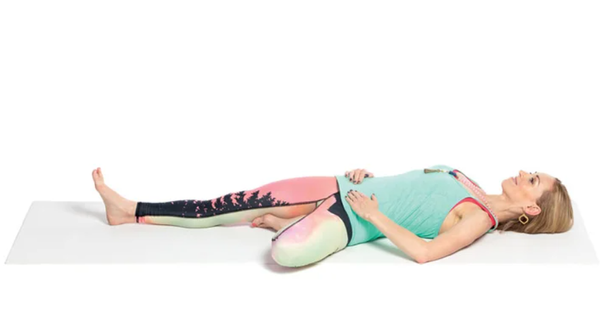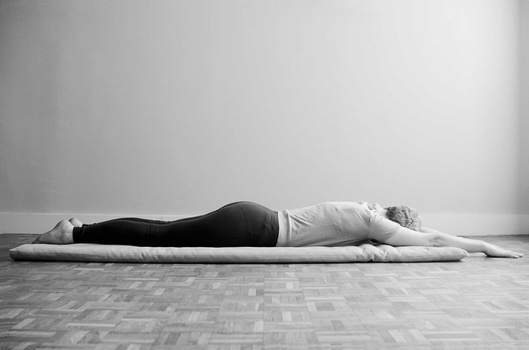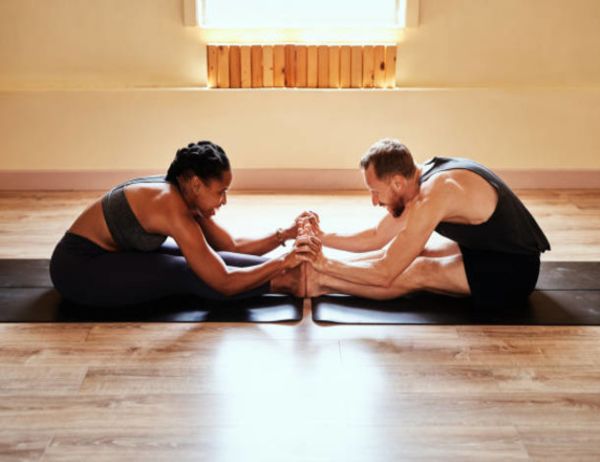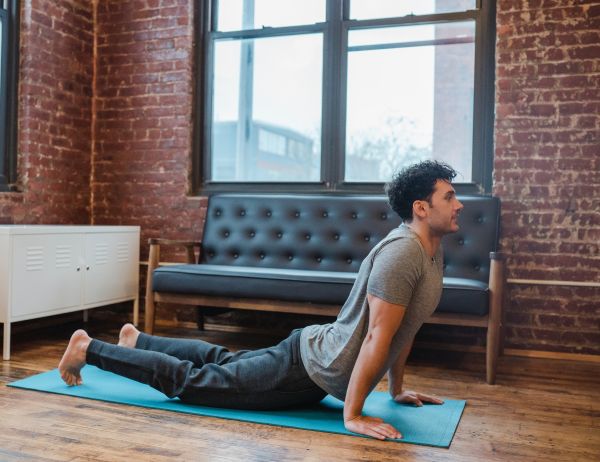Savasana is itself a resting pose, so there is generally no need for a warm-up or relaxation routine in order to prepare for the corpse pose.
Even the steps are very straightforward and all it requires is mindful breath awareness. So, let’s dig straight into the steps of Shavasana.
Part 1: Step-by-Step Instructions to Perform Shavasana
This pose might seem easy, but it’s one of the hardest poses to master because it involves the challenge of finding a deep state of relaxation—with the intention of letting go. This pose is one of the main reasons people practice yoga.
The following is a list of corpse pose steps:
Step 1- Sit on the mat in a comfortable position. Relax your neck, shoulders, and spine.
Step 2- Lie on your back, rest your hands on your chest, and extend your legs forward.
Step 3- Relax every part of your body and feel yourself being supported by the mat beneath you.
Step 4- Observe your body from head to toe, surrendering to the present moment.
Step 5- Notice all the places where your body makes contact with the mat and release any tension in your muscles.
Step 6- With each exhalation, imagine your body getting heavier and sinking deeper into the mat. Release everything into the floor.
Step 7- Stay in this position for as long as you feel comfortable or desired.
Step 8- To exit this corpse-like formation, exhale deeply and roll onto one side.
Step 9- With a few deep breaths on the side, place one hand on the floor, press your hands and lift the torso from the yoga mat.
Step 10- Slowly align your head straight. Sit in Padmasana for a few minutes and then release.
Breath Awareness:
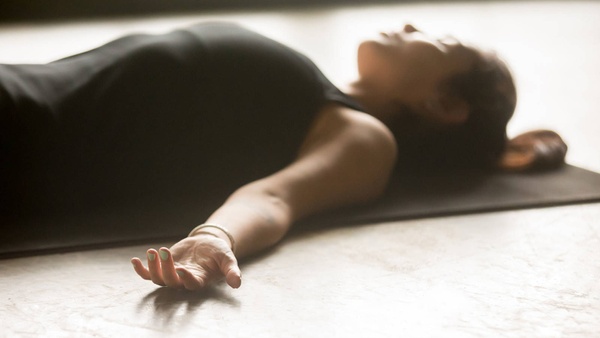
Deep Relaxation Technique or DRT is a breathing pattern that works best for Corpse Pose. It is a slow way of scanning the whole body for remaining stress points and releasing them by attaining coordination between breath and body.
Here is how you perform DRT while performing Shavasana:
Lying down in the Corpse position, completely relax and keep breathing normally for a few minutes here.
As you connect to a normal breathing pattern, try not to put a lot of pressure on any exhale or inhale motion.
Now, after 2-3 minutes, with an activated consciousness, scan your whole body from head to toe and try to release tension from each body part one by one.
Bring your awareness to the nostrils and feel the coolness and warmth of each inhale and exhale.
As you feel the breath, move your awareness from your toes to your waist and try to relax your whole lower body.
Move your awareness from the abdomen to the chest. Inhale deep and fill your abdomen with air, then exhale twice the size of inhaling.
Again, move your awareness up and open your chest for deeper breathing motion.
After a few seconds, slowly move your awareness towards your brain and close your eyes. Here, you can chant 4 to 5 rounds of AUM for a complete release of mental stress.
Now, feel the vibrations of your chant and observe whether your body feels relaxed or not. If not, you can repeat this cycle.
Performance Duration for Beginners: Hold the Corpse pose for 1 to 5 minutes.
Performance Duration for Advanced: Hold the Corpse pose for 10 to 20 minutes.
Part 2: Things to Keep in Mind
If you are a beginner at this practice, it’s good to stay aware of some key points before starting your yoga practice. The following are some important things to keep in mind while practicing Shavasana:
Don't arch your lower back: There should not be any gaps between your lower back and the ground while lying down on the yoga mat. This unnecessary gap can cause pressure and pain in the lower back.
So, make sure to tuck the abdomen inside towards the spine. When you engage the core, this arching problem no longer occurs.
Don't stress about your mindfulness: Many newbies start to feel stressed when they are asked to focus or be more conscious in the Corpse pose. As a beginner, it's too much. Just do what comes naturally.
Don't overthink it, or you won't be able to relax properly. Take guidance from a certified teacher while practicing Shavasana if you feel stressed.
Don’t let your mind wander: The human mind can be challenging to tame. Usually, when people with mental trauma or anxiety close their eyes, they find themselves lost in an infinite loop of memories.
To avoid this, start to feel your breath or add a loud mantra chant while relaxing in the corpse pose. Smile big with your eyes closed if your thoughts are too painful or if they increase feelings of stress even more.
